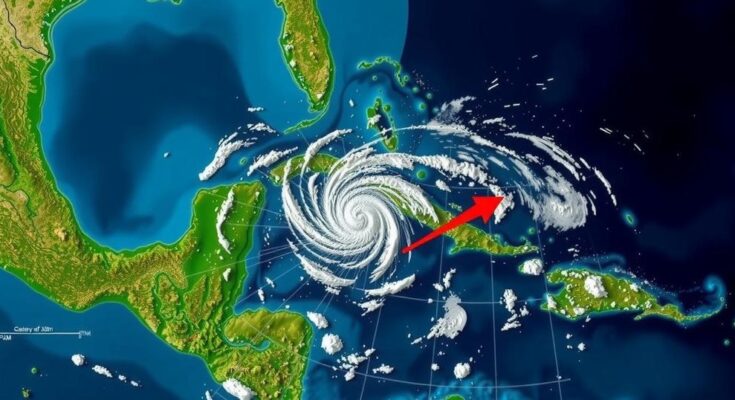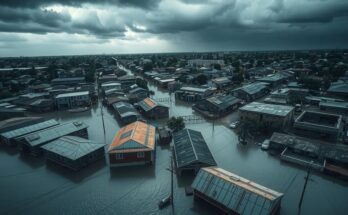Hurricane Rafael has strengthened to a Category 3 storm with winds of 120 mph, moving away from Florida in the Gulf of Mexico. Heavy rains are affecting Puerto Rico due to a nearby trough of low pressure, but it has a low formation chance. The hurricane season runs through November 30, warning residents of potential hazardous conditions from Rafael’s swells.
The National Hurricane Center has reported that Hurricane Rafael has intensified into a Category 3 storm, currently exhibiting sustained winds of 120 mph. However, it is projected to migrate away from Florida and the mainland United States, meandering through the Gulf of Mexico while expected to weaken over the coming days. Heavy rain and thunderstorms have been experienced in Puerto Rico due to a nearby trough of low pressure, which carries a minimal chance for development in the next week. Rafael had previously impacted western Cuba, resulting in significant electrical outages before it regained strength in the Gulf. If it maintains its current course to the west-southwest, Rafael will encounter increasing wind shear, causing a gradual reduction in its wind intensity. Furthermore, swells generated by the storm are anticipated to produce hazardous surf and rip current conditions along the Gulf Coast. Residents in the southern and southwestern Gulf of Mexico are advised to stay informed regarding Rafael’s progression. The hurricane season officially concludes on November 30, encompassing the Atlantic Ocean, Caribbean Sea, and Gulf of Mexico.
The Atlantic hurricane season spans from June 1 to November 30, during which weather systems can develop into significant storms, including hurricanes. The National Hurricane Center actively monitors these storms, providing updates and forecasts to the public to ensure preparedness. Rafael, recently elevated to a Category 3 hurricane status, highlights the dangers associated with tropical weather, including the potential for severe impacts on coastal communities. The dynamics influencing Rafael’s path, alongside other systems in the area, further underscore the need for vigilance among those in potentially affected regions.
In summary, Hurricane Rafael has intensified but is expected to move away from the Florida coastline, reducing immediate threats to the state. As swells pose risks of dangerous surf and rip currents along the Gulf Coast, affected residents should remain alert and prepared. With the hurricane season concluding at the end of November, ongoing monitoring of tropical systems is crucial for public safety.
Original Source: www.timesreporter.com




